Disability and Narrative: an Analysis of On-screen Characters
Disability can be divided into physical and mental conditions that limit a person’s normal movements, senses, or activities. The portrayal of disability can also be observed frequently on the screen, in films and television dramas. When it comes to the on-screen disabled characters, there are several questions deserve consideration: Why do directors portray disability? What are the functions of disability in characters, and how does disability contribute to the narrative of an audio-visual work?
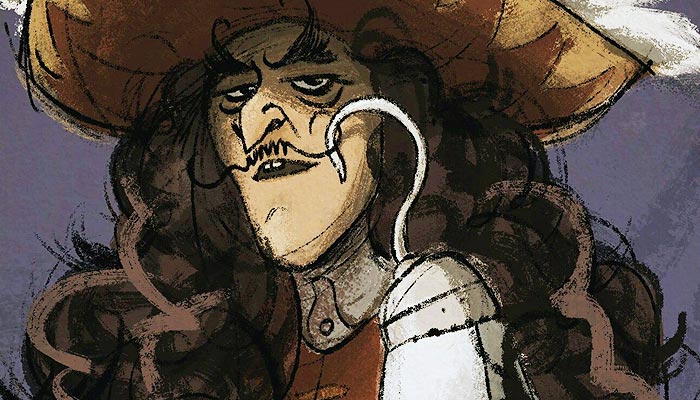
The main focus of this article is disability in films. However, it chooses not only several films but also a television series which depict disability as the objects to demonstrate the different functions of disability. In some films, disability is endued to the main characters. Examples of them are How to Train Your Dragon (2010), The Theory of Everything (2014), Scent of a Woman (1992), and My Left Foot (1989). In other films, disability is observed in the side characters (or supporting characters) rather than the protagonists, which is attested by movies such as The Intouchables (2011) and Rain Man (1988). The TV drama Breaking Bad (2008) also provides an example of this. In fact, the roles of disability in different characters are various on the storytelling, which is in consistence with what the director intends to express.
The General Meaning of Disability On-screen
Illness is politicized and metaphorized, according to Susan Sontag (2002). Disability is likewise. While disability, essentially, is simply a physical or mental condition, different types of disability have incorporated variant metaphoric meanings. These meanings are usually negative stereotypes as they originate from the social bias and discrimination towards the disabled group in history, and this has been criticized by scholars such as David Mitchell in Disability Studies. For example, in the statement of knowing is seeing, misunderstanding and ignorant is deliberately or unconsciously linked to blindness (Vidali 2010). “Heart disease almost always symbolizes a hero’s grave moral flaw; an amputee must crave wholeness” (McCobin 2016); and mental disorder, which leads to the lack of control of a person’s emotion, behaviors, cognition, and social relationship, is linked to the stereotype of endangerment and threat (Szasz 1973).
The semiotic implication of disability may vary in different cultures. However, disability, when it is shown on screen, basically suggests a difference – physical, mental, or psychological – from the mainstream group in society. This is the most direct sense that disability on the screen conveys to audiences. Because of the difference, a sense of isolation from the mainstream of society is generated, and it has thereby led to Otherness. Martin F. Norden has noticed this and argues in his book The Cinema of Isolation: A History of Physical Disability in the Movies that the film audiences (especially those of the early films) are associated with able-bodied groups and characters with disability are isolated and reduced to “objectifications of pity, fear, scorn, etc. – in short, objects of spectacle” (Norden 1994, p1).
Disability, according to its meaning of being excluded, can be used to identify certain groups. As disability leads to the limitation of a person’s movement or activity, it is inferred that disability shows a relative weakness compared to the normal condition of human beings. While disability is embedded with the meaning of weakness, the disabled group thereby becomes disadvantaged – they need to be protected, cared about, and treated differently from the normal people.
On the other hand, disability is linked to the notion of evilness and has been a stereotype of antagonists. According to Norton (1994), many literature works in ancient times such as the Bible regard healthy and physical perfection as spiritual goodness. By contrast, illness and disability are caused by sin or the punishment of evil. See in this way, in the old days, a person who is inherently disabled is deemed as an implication of evilness. Besides, it can still be seen in movies that a person is embedded with evilness which is previously caused by disability – “[film directors] especially like giving someone a horrible accident/traumatic illness that turns them bitter and evil — sometimes they’re kind enough to show that transformation on screen, at other times it’s part of the character’s backstory” (Smith 2015). For instance, one of the most common antagonist images usually with disability in movies is the pirate. A blind eye or the lack of a hand or a foot has become a sign of the identity of this group. While this disability might be inborn, representing deterministic evilness, the implication of this type of disability when it is later acquired is violence or battle. This is to say, a pirate with these disabilities marks that he has been involved in violent activities. Therefore, the personality of a pirate is implied through their disability – hostile, aggressive, and violent.
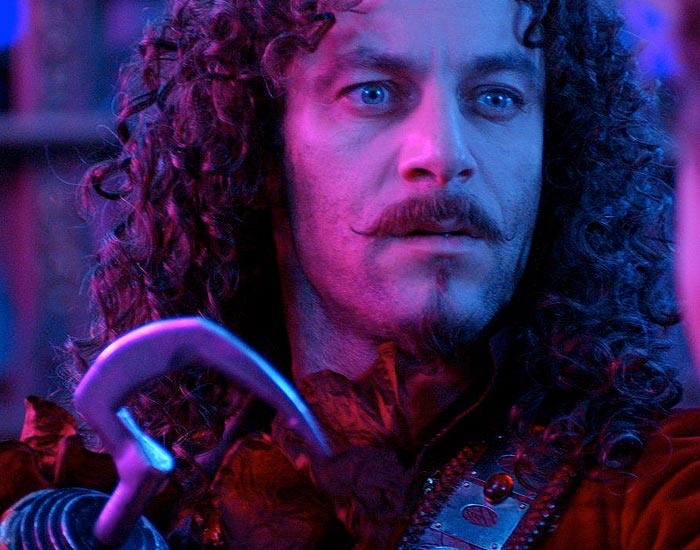
Disability in the Main Character
Although there are still evil antagonists in movies who are consistent with the old stereotypes, one of the common practices of disability in the main characters in contemporary films is to suggest a person’s positive characteristics. Commercial films, especially those in the Hollywood style, usually show the conflict and how the main character at the end solves it. Disability in the main character, in this sense, can serve as a trouble for the protagonist to fight with and struggle on. This is often seen in the films as biographies or based on true stories. These films depict the conflicts and struggles during the protagonist’s dealing with his or her disability and finally achieving success in terms of mental condition or career.
The Theory of Everything (2014), as a biography of Stephen Hawking, portrays Hawking’s (acted by Eddie Redmayne) personal life and career achievements. While spending his early life at Cambridge University as a talented student, he began to show the symptom of amyotrophic lateral sclerosis (ALS). The disease led to paralysis. Hawking became gradually disabled in daily movements such as walking (and later one of his surgery made him unable to speak). The portrayal of Hawking’s disability in this film, together with his academic achievement such as publishing A Brief History of Time, demonstrates the difficulty of making such achievements. In a group of films such as Frida (2002) and My Left Foot (1989), disability in the main character serves a similar function – visualizing the predominant hardness of the main character’s life.
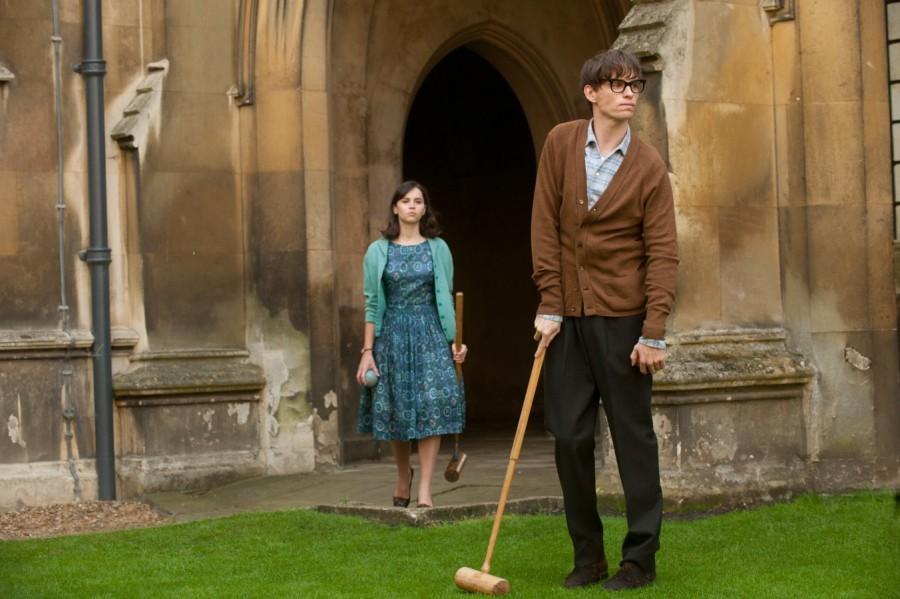
In How to Train Your Dragon (2010), while disability in the protagonist still functions as an obstacle that needs to be dealt with, it has multi-layered meanings apart from it. Hiccup, the main character as an adolescent in a Viking village, is different from the other villagers because of his weakness. Hiccup’s father regards him as ineligible to be a warrior to fight dragons, their enemy. Nevertheless, this disability becomes a source of his empathy with a dragon which loses a part of its tail and is unable to fly. The empathy motivates Hiccup to find another way facing dragons – not by committing violence but by training them to create a companionship. Hiccup, in the end, loses one of his feet, and the disability makes him more similar to his dragon friend. Disability in the protagonist, therefore, not only stands for an obstacle that the character needs to defeat in his life but also becomes a prop in the narrative of this film. It helps define the personality of the main character, resonates to the disability on the dragon, and paves the way for Hiccup to discover the new relationship with dragons.

Disability in the Side Character
Disability shown in the side character can also serve as an obstacle that requires the protagonist to deal with, especially when the disabled character has a close relationship (such as family) with the protagonist. For instance, in the television series Breaking Bad (2008), the son of the protagonist Walter White has cerebral palsy which makes him have trouble walking. The disability, together with Walter’s diagnosed lung cancer and his wife’s unexpected pregnancy, becomes a tripled burden on him. The disability of the son in the TV series later also be one of the motivations of Walter’s decision to earn an amount of money for the family before his death.
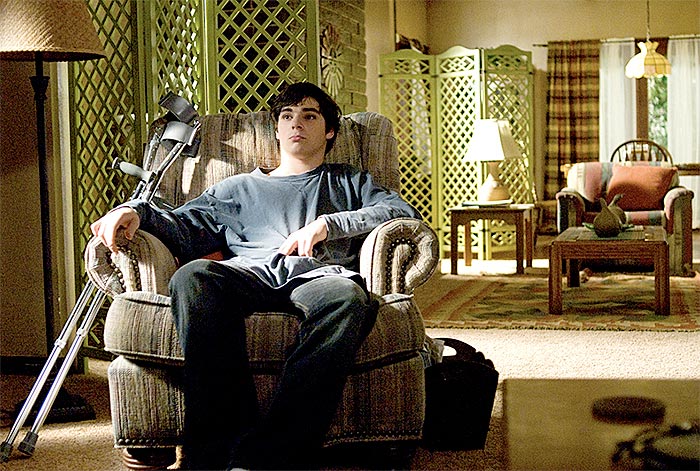
In other films, disability in the side character generally helps contribute to the personality of the main character. To be more specific, the protagonist’s personality can be depicted through how he or she treats the side character with disability. The French film The Intouchables (or known as Untouchable) (2011) is one of the examples. There are technically two main characters in this film: Driss, an African immigrant, and Philippe, a wealthy man who was injured in an accident and cannot move any body parts under his neck. While Driss shows no interest, he is hired by Philippe to be his live-in caregiver because, as said by Philippe, Driss treats him like a normal person rather than a disabled patient. Indeed, Driss usually forgets that Philippe is disabled. In the film, he passes a ringing mobile phone to Philippe and several seconds after, he realizes that Philippe cannot take it. This personality shown through Driss’s attitude towards the disabled is one of his precious traits which can be observed by the film audiences. Likewise, Rain Man (1988) also has an able-bodied protagonist and a disabled side character. The way that Charlie treats his autistic brother Raymond has gradually changed from the beginning to the ending. Whereas initially, Charlie just wants to get the father’s legacy from his brother, he understands more about Raymond in his journey and generates the feeling of intimacy with him. This alteration suggests the mental growth of Charlie as he learns about love rather than caring only about money.
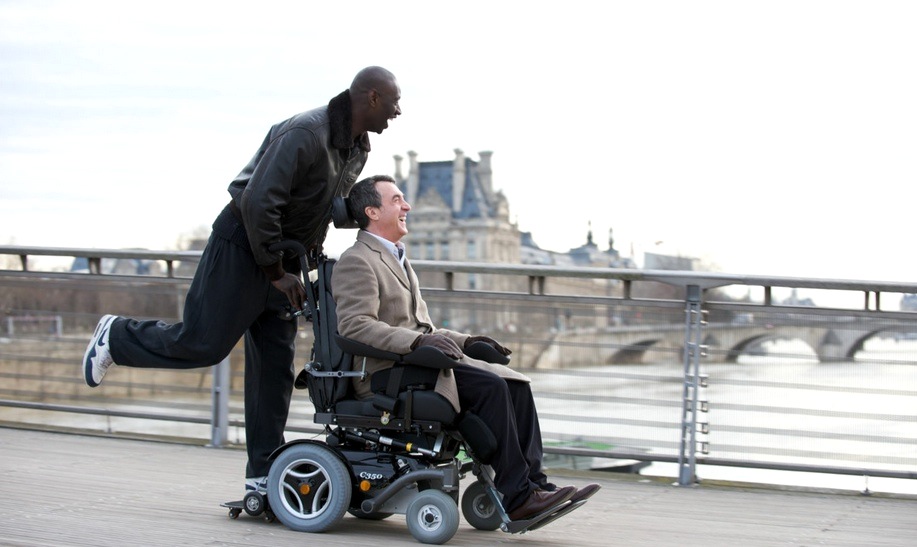
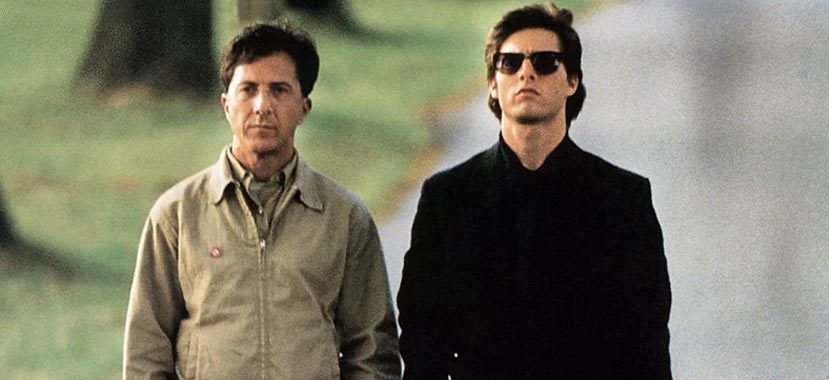
In the South Korean film Silenced (도가니, 2011), disability in the side characters also plays a crucial role. The main character of this movie is a teacher with physical perfectness employed by a deaf-mute school for children. Occasionally, he found that many students in the school are suffering from sexual abuse from the school’s headmaster. Discovering this, the teacher starts his struggle to protest and find legal assistance for these disabled children. The deaf-mute disability in this movie, on the one hand, refers to the real disability in the kids. On the other hand, it has a metaphorical meaning that the kids are silenced by the patriarchal power in the school as well as in the whole social-political system. In this way, the personality and the behavior of helping the children of the main character have also shown dualism – when he cares about the disabled group, which shows his kind attitude towards them, he also fights for the silenced victims against the patriarchal power system and the unfair law.

Disability, as a physical or mental condition, has been linked to metaphoric implications and influences storytelling when it appears in motion pictures and other audio-visual work. The above films demonstrate that while disability in the main character is often used as an obstacle, its use in side characters usually helps contribute to the personalities of the main character. However, there are still a large number of films depicting disability that are not touched upon in this article. For example, City Lights (1931) directed and acted by Charlie Champlin, Forrest Gump (1994) in which both the main character and the side character have different disabilities, and films from non-Western culture involving disability such as the Chinese film Breaking the Silence (2000). Disability can be decoded in different ways when it is perceived on screen, and this probably depends on the film’s or the television’s narrative and directors’ intentions.
Works Cited
McCobin, Julianne. 2016. “Disability and its metaphors”. http://disability.virginia.edu/2016/03/14/disability-and-its-metaphors/.
Norden, Martin F. 1994. The Cinema of Isolation: A History of Physical Disability in the Movies. New Brunswick, N.J.: Rutgers University Press.
Smith. s.e. 2015. “Disability as metaphor, and why you shouldn’t”. http://meloukhia.net/2015/05/disability_as_metaphor_and_why_you_shouldnt/.
Sontag, Susan. 2002. Illness as Metaphor; And, AIDS and Its Metaphors. London: Penguin Classics.
Szasz, Thomas S. 1973. “Mental Illness as a Metaphor.” Nature, 242(5396). https://doi.org/10.1038/242305a0.
Vidali, Amy. 2010. “Seeing what we know: Disability and theories of metaphor.” Journal of Literary & Cultural Disability Studies 4, no. 1 (2010): 33-54.
What do you think? Leave a comment.











The issue I have is that the portrayal of people with a disability tends to focus on the disability being the single defining point of the character.
Progress is being made and there are examples of disabled characters that transcend this laziness. Unfortunately they are few and far between.
This.
When an able bodied actor portrays someone with a disability then the oscars come out (Daniel Day-Lewis, Tom Hanks, Dustin Hoffman, Al Pacino etc). These characters generally play to the audiences stereotype of the disability and then everyone in Hollywood pats themselves on the back as they collect the silverware and the money.
Therein lies the problem. Films and television are escapist in nature and the day to day life of someone coping with a disability is often too complex to fit into the constraints of an on-screen character. What we get instead are stereotype-driven feel good stories of a person overcoming challenges to live a ‘normal’ life. They make big money at the box office and as a result are self-perpetuating.
Beautifully put. Thanks.
There is obviously a need for disabled characters, my only problem is that able bodied actors are given awards for their representation? Things will change though, I think humanness will win! Not some bizarre able bodied elitism!
I vividly remember bursting into tears when Liz Carr was introduced as Clarissa; the forensic examiner in Silent Witness. To see a woman in a wheelchair being so competent and respected in a scientific field and being allowed her own character and narrative that didn’t focus entirely on her disability felt completely overwhelming. Seeing that at what was one of the worst times of my life was so, so important to me, especially as she was in a field that I still hope to go into. It’s easy to underestimate how much representation means to people who aren’t used to seeing people like them portrayed that way.
I remember having a similar reaction when watching Francesca Martinez.
Whilst she mentions her cerebral palsy in her stand-up routine, she is first and foremost a comedian.
I think there is certainly a place in movies and tv for disabled actors. In breaking bad Walt’s son has some sort of condition that makes him move and talk differently than most people. It was never really refers to as everyone in the show just accepted he had it and the story was about him dealing with his parents actions not revolving around the disability. I remember checking Google to see if the actor was actually disabled or playing the part of a disabled character, turns out he has the condition in real life. It just goes to show that disabled teenagers sometimes have to deal with issues like incredibly screwed up parents. He was good actor. Now on the other side of the coin I see how it would be unrealistic to portray him as something like an astronaut or action hero for main stream blockbusters. But no reason why he can’t have strong supporting roles in such films. Besides, our ideas of what a hero is expand over time. Stephen Hawking needs no introduction and is a hero to many. And that really short man from Willow, he has his own comedy show now, Life’s too Short, it’s brilliant and hilarious.
I watched the first episode of Breaking Bad and thought; “oh no, another wooden disabled character. How long before they make a big deal out of it?” and then…nothing. It’s not mentioned, he’s just a character, a person like the rest of us. Very refreshing. It’s also an excellent show.
I too thought Walt Jr was handled really well, especially as his disability is such a visual one. In fact, he’s probably one of the strongest characters in the show. He doesn’t exactly let his disability get the best of him, and even uses it as an “excuse” when he reprimands his dad for giving up and not fighting his own illness.
I can only agree with that comment, nothing was made of it just a regular character. It never became a “thing”.
Silenced is a great film. Watched a S. Korean film called Oasis the other day about the relationship between an outcast and a woman with severe Cerebral Palsy. The lead performances are excellent and the director doesn’t hold back in confronting audience perceptions.
I really enjoyed Untouchable. But cinematic representation of disabled people has a long way to go. For a start, the lead in Untouchable was played by a non-disabled actor, but it would have been a good opportunity to give a meaty part to a disabled actor. Secondly, we still all too often have baddies who are visibly disabled or physically different.
I want to mention “What’s Eating Gilbert Grape”, because I remember being very moved by the performances of both DiCaprio and Darlene Cates. True it was a mental disability that Arnie (DiCaprio) was suffering from, and the mother Bonnie (Cates) was “just” grossly overweight, but it was depicted with heart and warmth. DiCaprio was also Oscar nominated for Best Supporting Actor.
There are always going to be a splattering of quality movies about disabled people here and there.
Good article on The Artifice, as ever.
Authenticity is always important in both the arts and politics. And as politics is influenced by the arts…
I am sick to death with:
i) disability being portrayed as almost solely being-in-a-wheelchair, (with the occasional deaf actor for one-offs), and
ii) disabled people not just being given regular parts, being regular people… without having the storyline focus entirely on the fact they have a disability. We’re all just people, and we’re everywhere, cant storylines just reflect that?
Agreed. We are people, not plot devices.
Peter Dinklage as Tyrion Lannister in Game of Thrones is a notable exception to ii).
Not entirely sure being a dwarf counts as a disability though.
It does. Many with Dwarfism have skeletal problems.
This is a really important topic, thank you for covering it!
I’d like to see more actors who suffer from the more ‘invisible’ disabilities being open about it as well. We all tend to think of disabled people as being in a wheelchair, or having quite physically obvious disabilities like Downs’ Syndrome, but in fact there are thousands of disabled people working full time and not talking about their disability, we need to change perceptions of disability generally from something extreme, odd, out of the ordinary, to something we actually all meet every day, frequently without realising.
While thoroughly agreeing with you it must be added that people with a disability, seen or unseen, who are in work have achieved it against the odds. The prejudice, the unhelpfulness and the failure of the education system and employers to do what is required of them under the Equality Act make decent employment unlikely.
The Public Sector has enhanced duties in this but fail to carry it through.
What we need to see is more characters who just happen to have a disability without that itself being a major plot point. Lots of people without disabilities seem to think that the disability is the entirety of the person who has it – I get this all the time, even from friends, when I am so much more than my disability – it is just one thing about me, and that’s even though it is very severe indeed, and my life is not just constantly about my disability.
In addition, we need to see more people with severe and complex disabilities; so often ‘disability’ for casting directors and script-writers seems to mean ‘is in a wheel-chair’ or ‘is blind’. I understand that these are very visible disabilities which come across easily over the screen, but it’s not good enough, and just adds to the idea out there in the real world, that people only have a disability if you can see it. So many of us have invisible disabilities and face abuse from people who don’t believe we are disabled. And so many of us have disabilities where we can’t just live a ‘normal’ life. Where are the housebound people in soaps? Where are the people in constant, severe pain? On TV, they just don’t exist.
Finally, script-writers and casting directors seem to think that if they have one person with a disability in their show then they have that box ticked. There should be people with various disabilities in the same programme, again without the disabilities necessarily always being a plot point. I have a neurological condition, am in constant pain and can’t work – how does one person in a wheel-chair who is not in pain, goes out and about, and has a job represent me?
Could not agree more. Such a good point you made here.
How do you know television programmes AREN’T showing characters with invisible disabilities ?
The Farrelly brothers films often include disabled actors. I can think of no others that do – and very few TV shows (Breaking Bad & RJ Mitty being probably the highest profile?).
Great article. If you are looking for a positive portrayal of a disabled character, why not start with Bad Day at Black Rock?
Tracy’s character starts off thinking his life is over due to his injury, but ends up transformed into a reluctant hero, all the while forcing America to look at its treatment of Japanese-Americans whilst simultaneously bringing the western into the 20th century.
Really great film!
Disability could be seen as less than saintly or heroic,as I remember being deliberately run into by someone on a motorised wheelchair,pity makes most people think the disabled are nice,and like all people some of them aren’t,and I think it’s patronising to think otherwise.
Films about mental illness always end on the cliche of a hopeful tomorrow,never the normal,day in day out slog of coping with it, with the cure apparently being a haircut, new clothes and a shave.
I strongly recommend “The Sessions”, based on poet Mark O’Brien’s article about hiring a sex surrogate to lose his virginity and start along the path to finding long-term love.
Although O’Brien, who is paralysed from the neck down and relies on an iron lung to breath, is played by the able-bodied John Hawkes, the film does fulfill this article’s other points: it’s based on the account of a disabled artist, and it helps change perceptions: in this case of the sex life – and the desire/need for a physical expression of love – of people with severe physical disabilities.
It’s warm, funny, sometimes uncomfortable and very real-feeling film that digs into the core of what is important to humans and why, whether we have fully functioning bodies or not.
A lot of films always seems to focus on being struck down by disability and portrays them as being heroic for having a disability. The Jake Gyllenhaal storyline seems a bit like Born on the Fourth of July, Breathe like the Diving Bell and the Butterfly, My Left Foot all with non disabled actors (all great films btw). I don’t really have a problem with that or how good they are at faking being in a wheelchair more the predictable storyline’s and subtext.
People need to open their eyes and look around them and look out for others beyond their own egos. Films can be a useful addition but not a replacement for sensitivity to people’s environment and engaging all the senses they were fortunate enough to be born with in personal observation and putting their findings to some meaningful purpose.
Then there’s the disabled hard-man gangster portrayed by Christopher Walker in “Things To Do in Denver When You’re Dead”. A sinister Walken is confined to a wheelchair, but that doesn’t prevent him from ordering murders or seeking sexual gratification from a comely carer. Not a bad movie at all.
The concept of able-bodied playing at ‘disabled’ is wrong, and should become something to be discouraged.
There are many very talented disabled actors whom don’t even get a look in.
One issue about actors with disabilities is the appallingly low rate of them playing roles that have nothing to do with disability.
Obviously there is Silent Witness’ Liz Carr but there should be so many.
You would hope that films include more and more realistic depictions of disabled people but I feel it’s going to be more of a drip, drip process rather than opening the floodgates
One of the places you see this done well is actually on BBC kids tv, particularly CBeebies. People with disabilities, both kids and adults are often portrayed in shows and in between them in segments which have nothing to do with their disability.
There was absolute uproar when CBeebies hired a presenter with one hand a few years ago. Some really vile opinions were aired, claiming her disability would traumatise children and nonsense like that. My son was little at the time, and barely seemed to notice her arm was different- she was just a nice smiley lady on TV, and I never heard of any child complaining or being frightened at all- kids are generally open-minded and accepting of difference, unlike some adults. Don’t know whether she’s still on CBeebies or not.
Thank you so much for this article, I really loved it and I’m glad that you dived into a subject rarely talked about.
Captain Hook! So crazy that he has such an obvious disability, yet I never viewed it as such until reading this.
Test post, will be removed.
This was good, Captain Hook could have been interesting to write about.
David T. Mitchell and Sharon L. Snyder coined the phrase “narrative prosthesis” when a disabled character’s disability plays a critical symbolic role in a story.
good work
I highly recommend The Peanut Butter Falcon for a film that casts a disabled actor as a disabled character but doesn’t foreground his disability as the sum of his identity. Also, it’s just a fantastic film.
The character attribute of disability sets up a strong obstacle for the development of the story (the process of character reaches its ideal goal). When the character overcomes it and succeeds, the audience feel great character charm. In short, disability enhances the drama of the story and shapes the tenacity of the characters
Great piece!